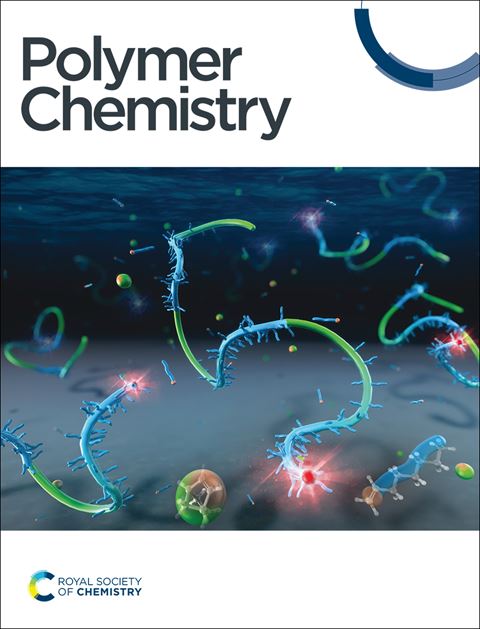以贻贝为灵感的PAM-PDA/Ga3+水凝胶,具有抗菌、粘合和自愈合性能,用于可穿戴应变传感器
IF 3.9
2区 化学
Q2 POLYMER SCIENCE
引用次数: 0
摘要
导电性可穿戴水凝胶传感器引起了广泛的研究关注,但将多种功能集成到单个水凝胶系统中仍然是一个关键挑战。在这项研究中,我们开发了一种多功能聚丙烯酰胺-聚多巴胺/镓(Ⅲ)(PAM-PDA/Ga³+)水凝胶,具有抗菌、粘附和自修复性能,用于可穿戴应变传感应用。该水凝胶是由Ga + -加速多巴胺(DA)氧化聚合形成聚多巴胺/镓(Ⅲ)纳米粒子(PDA/Ga + NPs)通过配位相互作用,以及丙烯酰胺(AM)单体自由基聚合制备的。PAM-PDA/Ga³水凝胶由于多种共价和非共价相互作用而表现出优异的力学性能和自愈能力。PDA中丰富的儿茶酚基团赋予了出色的粘附能力,而掺入的g3 +离子具有对金黄色葡萄球菌和大肠杆菌的广谱抗菌性能。作为一种可穿戴式应变传感器,自修复、粘合和抗菌水凝胶在检测各种机械变形和人体运动方面表现出强大的性能,突出了其在下一代可穿戴电子产品、软机器人和电子皮肤技术方面的潜力。本文章由计算机程序翻译,如有差异,请以英文原文为准。
Mussel-Inspired PAM-PDA/Ga3+ Hydrogels with Antibacterial, Adhesive and Self-healable Properties for Wearable Strain Sensors
Conductive wearable hydrogel sensors have attracted extensive research attention, yet integrating multiple functions into a single hydrogel system remains a critical challenge. In this study, we developed a multifunctional polyacrylamide-polydopamine/gallium (Ⅲ) (PAM-PDA/Ga³⁺) hydrogel with antibacterial, adhesive, and self-healing properties for wearable strain sensing applications. This hydrogel was fabricated by Ga³⁺-accelerated oxidative polymerization of dopamine (DA) to form polydopamine/gallium (Ⅲ) nanoparticles (PDA/Ga³⁺ NPs) via coordination interaction, along with free radical polymerization of acrylamide (AM) monomer. The PAM-PDA/Ga³⁺ hydrogel exhibits excellent mechanical properties and self-healing ability due to multiple covalent and non-covalent interactions. Abundant catechol groups in PDA endow remarkable adhesive capability, while incorporated Ga³⁺ ions confer broad-spectrum antibacterial properties against Staphylococcus aureus and Escherichia coli. As a wearable strain sensor, the self-healing, adhesive and antibacterial hydrogel demonstrates robust performance in detecting diverse mechanical deformations and human motions, highlighting its potential for next-generation wearable electronics, soft robotics, and electronic skin technologies.
求助全文
通过发布文献求助,成功后即可免费获取论文全文。
去求助
来源期刊

Polymer Chemistry
POLYMER SCIENCE-
CiteScore
8.60
自引率
8.70%
发文量
535
审稿时长
1.7 months
期刊介绍:
Polymer Chemistry welcomes submissions in all areas of polymer science that have a strong focus on macromolecular chemistry. Manuscripts may cover a broad range of fields, yet no direct application focus is required.
 求助内容:
求助内容: 应助结果提醒方式:
应助结果提醒方式:


